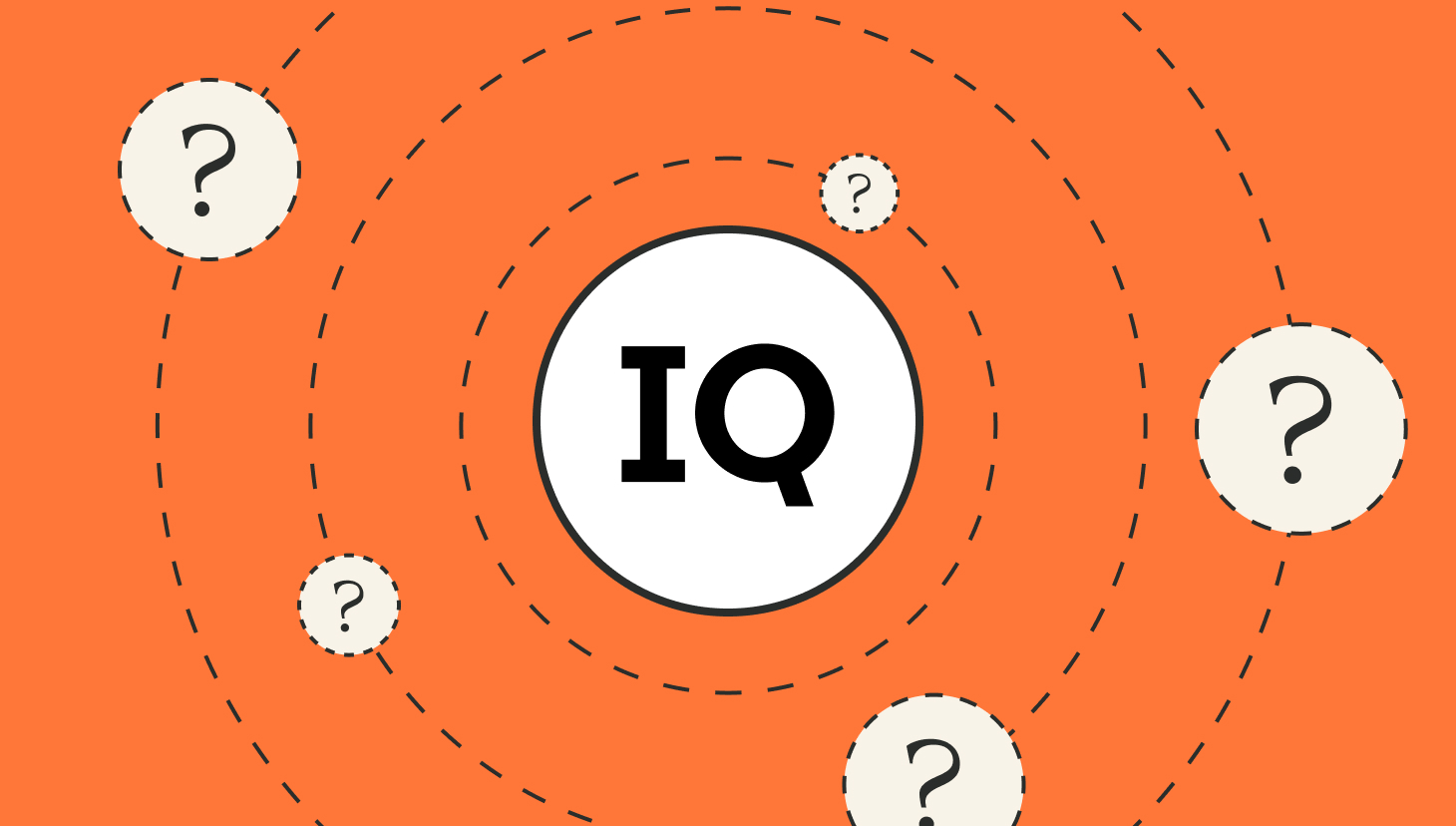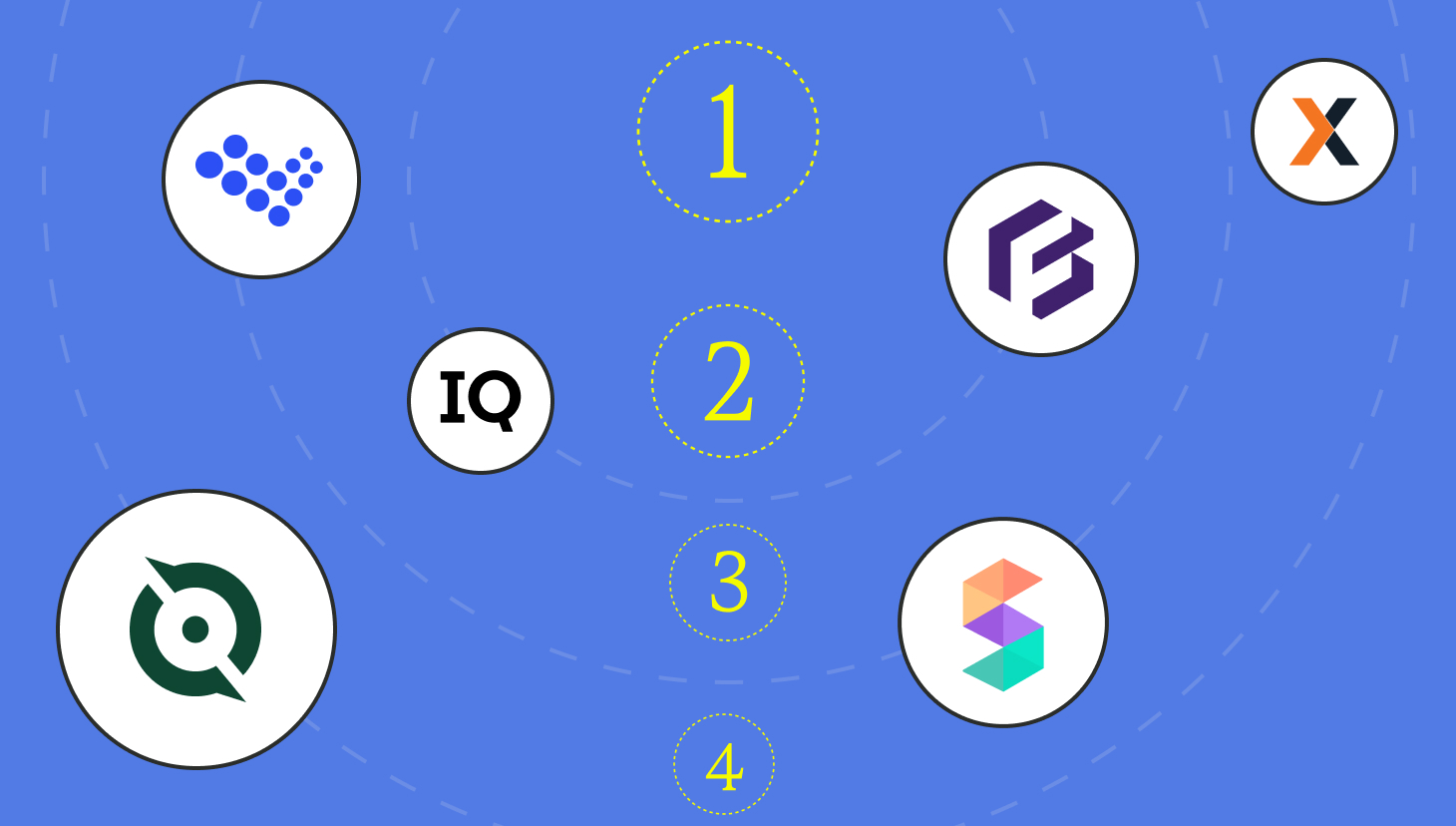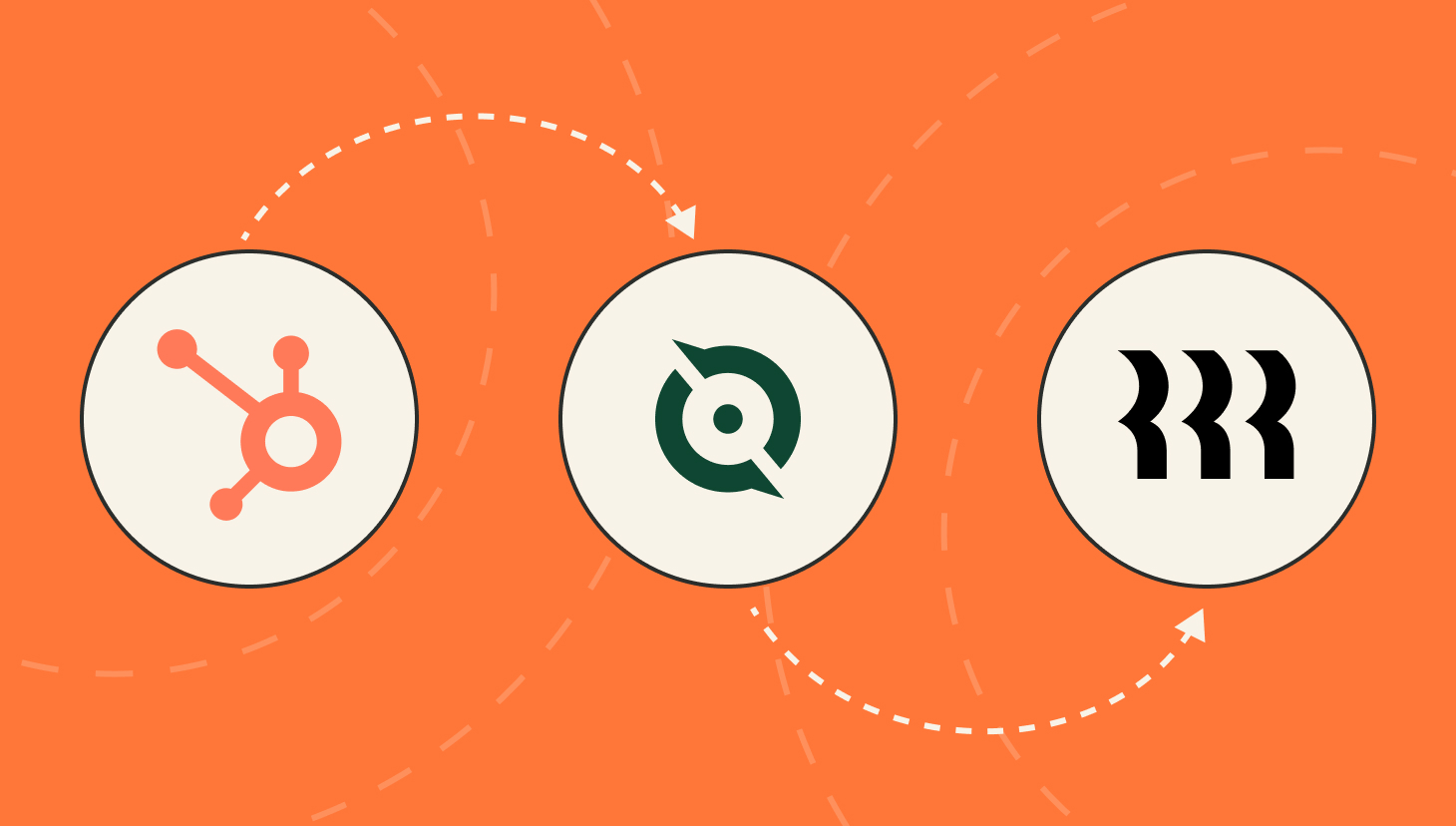For many RevOps leaders, the sales tech stack is the sacred key to operating efficiently.
With the right combination of tools, sales teams can automate tasks, streamline workflows, and gain valuable insights to close more deals.
In this guide, we’ll walk you through:
– What a sales tech stack is and why it matters
– The essential tools every sales team needs, from CRM to commission management software
– How to choose and build the right sales technology stack for your business
Whether starting from scratch or refining your existing sales stack, this guide will help you make informed decisions that drive revenue and efficiency.
Adding Commission Tracking
Interested in adding sales compensation management to your sales tech stack? Learn how doing so can help drive seller performance while saving time and eliminating errors on the backend.
Book a DemoWhat is a Sales Tech Stack?
Let’s start with the basics. A sales tech stack is the collection of software, tools, and technologies a sales team uses to manage processes and optimize performance. Sales technology plays a crucial role in modern sales teams, with an average of 10 tools per stack, according to Salesforce.
The sales stack streamlines processes, enhances productivity, and drives growth with data analysis, automation, and customer engagement.
Key software categories in today’s sales stack include tools for every sales aspect, including prospecting, commission management, lead enrichment, appointment scheduling, CRM, and contract management. This makes sales technology foundational to any successful sales strategy.
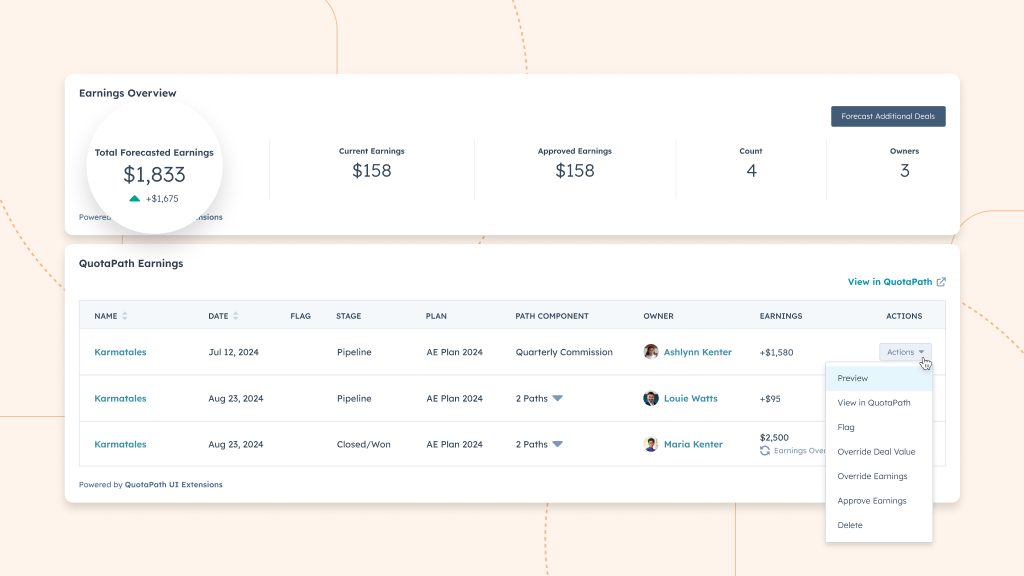
Why You Need a Strong Sales Tech Stack
Now that we’ve defined what makes up a sales tech stack, let’s dig into why having the right one in place correlates to your team’s success.
For any growth-oriented organization, this is a must-have.
First, investing in the right tools increases efficiency and productivity by reducing administrative tasks and enabling sales teams to focus on selling. A strong sales technology stack automates manual tasks, such as data entry and follow-ups, saving valuable time.
This automation also improves data accuracy and forecasting enabling better decision-making and revenue predictability.
Lastly, well-integrated sales technology enhances collaboration across teams by aligning marketing, sales, and customer success to a single source of truth.
The right sales stack empowers your team to work smarter, move faster, and drive consistent growth.
Tools You Need For Your Sales Tech Stack
Next, let’s check out the key tool types that make up a strong sales stack.
Prospecting Tools
Prospecting tools help sales teams identify, connect with, and qualify potential leads more effectively, filling the top of the funnel with high-quality opportunities.
Prospecting Software Use Cases
– Finding and Engaging Leads: Identify and reach out to potential customers through automated prospecting.
– Automating Outreach Sequences: Streamline follow-ups with personalized email and call sequences.
– Enriching Lead Data: Gather additional firmographic and behavioral insights to improve lead quality.
– Prioritizing High-Intent Prospects: Score and filter leads based on engagement and buying signals.
– Tracking Outreach Performance: Measure open rates, response rates, and conversion metrics to refine prospecting efforts.
Prospecting Software Benefits
– Increases Efficiency: Automates manual lead sourcing and outreach tasks.
– Enhances Personalization: Provides data-driven insights to tailor messaging for higher engagement.
– Improves Lead Quality: Helps reps focus on high-potential prospects with better qualification.
– Speeds Up Pipeline Growth: Fills the sales funnel with a consistent flow of targeted leads.
– Seamless CRM Integration: Syncs with your CRM to keep prospect data current.
Prospecting Software Examples
- Apollo.io – A comprehensive prospecting platform offering contact data, enrichment, and automated outreach.
- ZoomInfo – Provides market intelligence, lead enrichment, and buyer intent data to help sales teams target the right accounts.
- Lusha – A simple, effective tool for finding verified contact information and enriching lead profiles.
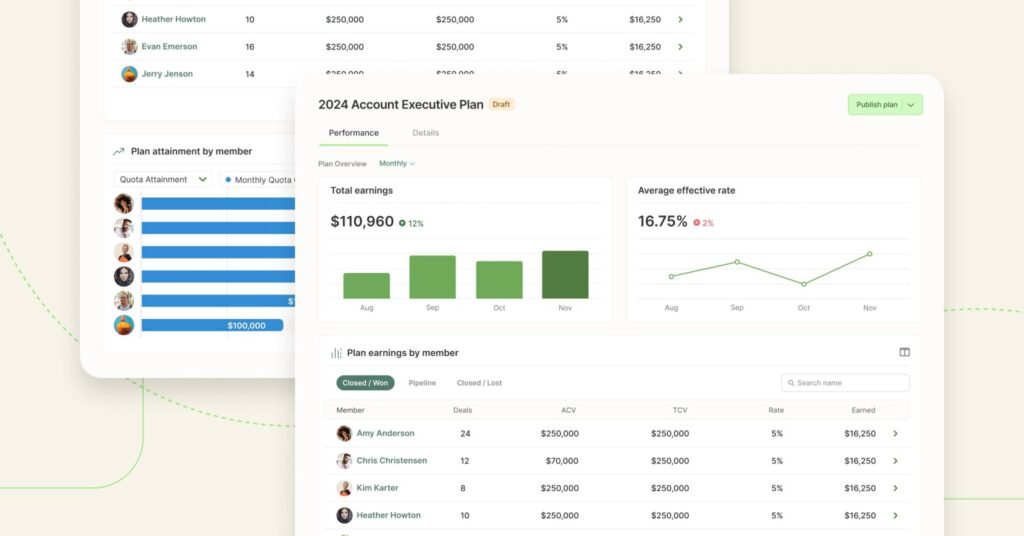
Commission Management Software
Commission management software streamlines commission tracking and calculation, ensuring accuracy and transparency.
Commission Management Software Use Cases
– Tracking and Calculating Commissions: Automate commission calculations based on deal data.
– Providing Transparency for Sales Reps: Offer real-time visibility into earnings and potential payouts.
– Forecasting Earnings: Allow reps to estimate their commissions based on pipeline performance.
– Ensuring Compensation Accuracy: Eliminate manual errors in commission calculations.
Commission Management Software Benefits
– Saves Time: Automates commission tracking and reduces manual calculations.
– Boosts Sales Motivation: Real-time earnings visibility incentivizes performance.
– Improves Accuracy: Ensures fair and error-free payouts.
– Seamless CRM Integration: Syncs with your sales data for automated tracking.
Commission Management Software Example
QuotaPath – A commission tracking and forecasting platform that integrates with CRM, Payroll, and data warehousing platforms to provide transparency and accuracy in compensation.
Spiff – A sales commission automation tool calculates and manages real-time commission plans.
Xactly Incent – A robust incentive compensation platform for enterprise sales teams to manage complex commission structures.
Try the most collaborative solution to manage, track and payout variable compensation. Calculate commissions and pay your team accurately, and on time.
Start TrialLead Enrichment Software
Lead enrichment tools enhance raw lead data with valuable insights; sales reps prioritize outreach and tailor messaging.
Lead Enrichment Software Use Cases
– Enhancing Lead Data: Add firmographic, demographic, and behavioral insights to leads.
– Improving Lead Scoring: Use enriched data to prioritize the highest-value prospects.
– Personalizing Outreach: Provide sales reps with deeper insights to tailor messaging.
– Automating Data Updates: Keep CRM records fresh with continuous data enrichment.
Lead Enrichment Software Benefits
– Increases Lead Quality: Ensures sales teams work with accurate and complete prospect data.
– Enhances Personalization: Provides deeper insights to craft targeted messaging.
– Saves Time: Automates data collection and updates in real-time.
– Boosts Conversion Rates: Helps reps engage more effectively with high-quality prospects.
Lead Enrichment Software Example
Clearbit – A lead enrichment tool that provides real-time firmographic and technographic
LinkedIn Sales Navigator – A prospecting tool that enhances lead data with social and professional insights.
LeadIQ – A prospecting and enrichment platform that captures and updates lead contact data.
Appointment Scheduling Software
Appointment scheduling tools simplify booking prospect meetings, reducing friction and accelerating the path from interest to conversation.
Appointment Scheduling Software Use Cases
– Automating Meeting Booking: Allow leads to book meetings directly from emails or websites.
– Reducing Scheduling Conflicts: Sync calendars to find available time slots.
– Improving Speed-to-Lead: Instantly schedule follow-ups after lead capture.
– Enhancing Team Coordination: Route meetings to the right sales reps.
Appointment Scheduling Software Benefits
– Eliminates Back-and-Forth Emails: Automates scheduling to reduce friction.
– Improves Lead Engagement: Makes it easier for prospects to book sales calls.
– Enhances Productivity: Saves time by reducing manual scheduling tasks.
– Integrates with CRM and Email: Syncs with existing tools for seamless scheduling.
Appointment Scheduling Software Example
Chili Piper – An intelligent scheduling tool that automates meeting bookings for sales teams.
Calendly – A widely used scheduling software that simplifies booking meetings with prospects and customers.
HubSpot Meetings – A free scheduling tool that integrates with HubSpot CRM for seamless appointment setting.
Sales Engagement Software
Sales engagement platforms empower reps to manage and automate their outreach across channels, keeping prospects engaged throughout the buying journey.
Sales Engagement Software Use Cases
– Automating Sales Outreach: Schedule multi-channel touchpoints (email, calls, social).
– Tracking Engagement Metrics: Monitor open rates, click-throughs, and response rates.
– Managing Sales Sequences: Set up automated follow-up sequences.
– Improving Rep Productivity: Reduce manual outreach tasks.
Sales Engagement Software Benefits
– Streamlines Outreach: Helps reps stay organized and proactive.
– Enhances Personalization: Uses AI and data to tailor messaging.
– Improves Response Rates: Optimizes outreach timing and frequency.
– Integrates with CRM: Keeps all engagement data centralized.
Sales Engagement Software Example
Outreach – A sales engagement platform that automates and optimizes outbound sales efforts.
Salesloft – A multi-channel engagement platform that helps sales teams personalize and scale outreach.
Apollo.io – Combines prospecting, enrichment, and engagement into one platform for automated outreach.
CRM
CRM serves as a central hub for managing customer relationships, tracking pipeline activity, and ensuring consistency in the sales process.
CRM Use Cases
– Managing Customer Interactions: Centralizes customer data and communications.
– Tracking Sales Pipelines: Provides visibility into deal stages and forecasts.
– Automating Sales Workflows: Reduces manual data entry and task management.
– Enhancing Customer Retention: Supports account management and renewals.
CRM Benefits
– Improves Sales Efficiency: Keeps teams organized with a single source of truth.
– Enhances Data Accuracy: Eliminates duplicate and incomplete records.
– Provides Actionable Insights: Helps forecast revenue and measure performance.
– Scales with Your Business: Adaptable to teams of all sizes.
CRM Example
HubSpot CRM – A user-friendly CRM with powerful automation and reporting capabilities.
Salesforce – An industry-leading CRM known for its scalability, customization, and integrations.
Pipedrive – A visual pipeline-based CRM designed for small to mid-sized sales teams.
Market Intelligence Software
Market intelligence tools equip sales teams with up-to-date insights into buyer behavior, industry trends, and competitive activity to refine targeting and messaging.
Market Intelligence Software Use Cases
– Gathering Industry Insights: Understand market trends and competitive landscapes.
– Identifying High-Value Accounts: Find potential customers based on firmographic data.
– Tracking Buying Intent Signals: Detect when prospects actively seek solutions.
– Enhancing Sales and Marketing Alignment: Provide shared data for better targeting.
Market Intelligence Software Benefits
– Improves Targeting: Helps sales reps focus on the right accounts.
– Speeds Up Lead Qualification: Provides real-time buying intent data.
– Strengthens Competitive Positioning: Helps teams anticipate market shifts.
– Integrates with CRM and Outreach Tools: Keeps data accessible for sales teams.
Market Intelligence Software Example
ZoomInfo – A market intelligence platform that provides detailed insights on companies and buyers.
Cognism – A B2B data provider that delivers intent-based lead generation insights.
Lusha – A contact and company data enrichment tool that helps sales teams find verified prospect information.
Sales Analytics Software
Sales analytics platforms turn raw sales data into actionable insights, enabling teams to make informed decisions, optimize performance, and forecast confidently.
Sales Analytics Software Use Cases
– Tracking Rep Performance: Monitor individual and team metrics.
– Analyzing Deal Trends: Identify what’s working and what’s not.
– Optimizing Sales Processes: Find bottlenecks in the pipeline.
– Improving Forecast Accuracy: Use data to predict revenue.
Sales Analytics Software Benefits
– Provides Data-Driven Insights: Helps sales leaders make informed decisions.
– Enhances Coaching Opportunities: Identifies areas for rep improvement.
– Improves Pipeline Health: Detects weak points in the sales process.
– Integrates with Sales and CRM Systems: Offers real-time visibility.
Sales Analytics Software Example
Gong – An AI-powered sales analytics platform that analyzes sales calls and pipeline health.
Chorus.ai – A conversation intelligence tool that helps sales teams analyze call and meeting insights.
InsightSquared – A revenue analytics platform that provides deep sales performance reporting.
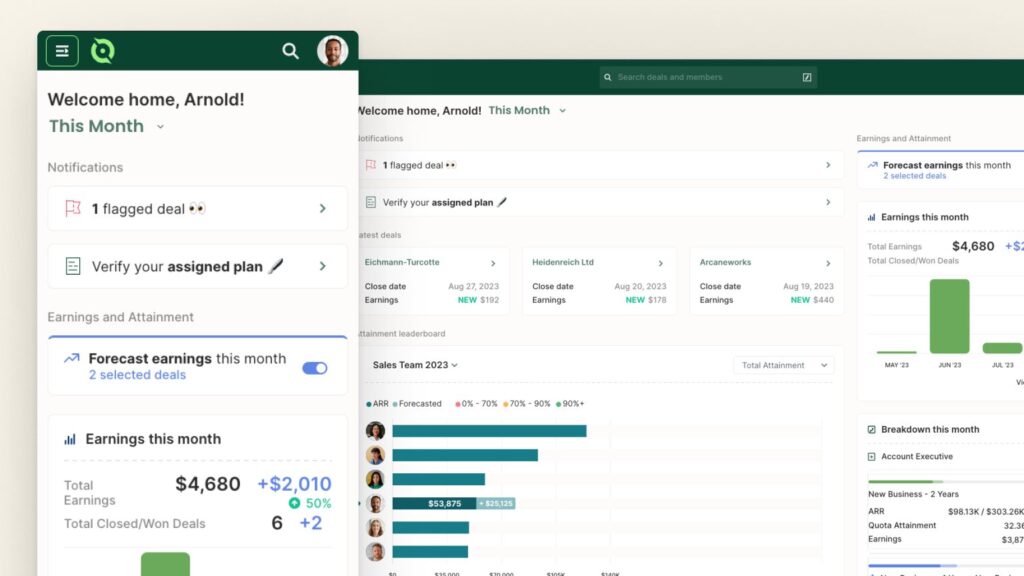
Sales Forecasting Software
Sales forecasting tools use historical data and AI to help sales leaders project revenue, assess pipeline health, and make strategic decisions with greater certainty.
Sales Forecasting Software Use Cases
– Predicting Revenue Trends: Use historical data to project future sales.
– Assessing Deal Health: Identify which deals are at risk.
– Improving Pipeline Visibility: Provide real-time insights into sales performance.
– Optimizing Quota Setting: Align goals with data-driven forecasts.
Sales Forecasting Software Benefits
– Improves Revenue Predictability: Helps companies plan more accurately.
– Reduces Uncertainty: Uses AI and data modeling for better forecasting.
– Enhances Decision-Making: Helps leadership adjust strategies based on trends.
– Integrates with CRM and Analytics Tools – Ensures real-time updates.
Sales Forecasting Software Example
Clari – A revenue intelligence platform that improves forecasting accuracy.
BoostUp.ai – A forecasting tool that combines AI-driven analytics with deal insights.
Aviso – A predictive sales forecasting platform that uses AI to provide deal and revenue forecasts.
Deal Management Software
Deal management tools centralize and streamline the workflow of advancing, approving, and closing deals, improving consistency and reducing sales cycle friction.
Deal Management Software Use Cases
– Managing Sales Approvals: Streamline contract and pricing approvals.
– Optimizing Deal Workflows: Automate handoffs between teams.
– Tracking Deal Progress – Provide visibility into deal stages.
– Ensuring Pricing Consistency – Standardize pricing across the team.
Deal Management Software Benefits
– Speeds Up Deal Closures: Reduces bottlenecks in approvals.
– Improves Compliance: Ensures deals meet company policies.
– Enhances Collaboration: Aligns sales, finance, and legal teams.
– Automates Pricing and Discounts: Ensures consistency.
Deal Management Software Example
Salesforce Revenue Cloud – A deal management tool that automates complex pricing and approvals.
PandaDoc – A document automation tool that streamlines contract and proposal workflows.
DealHub – A sales proposal and deal acceleration platform that simplifies pricing, quoting, and approvals.
Try the most collaborative solution to manage, track and payout variable compensation. Calculate commissions and pay your team accurately, and on time.
Start TrialContract Management Software
Contract management solutions automate and secure the process of drafting, sharing, signing, and storing agreements, accelerating deal closure and improving compliance.
Contract Management Software Use Cases
– Automating Contract Creation: Generate agreements quickly.
– Managing E-Signatures: Securely collect digital signatures.
– Tracking Contract Expirations: Keep tabs on renewals and expirations.
– Ensuring Compliance: Standardize legal language across contracts.
Contract Management Software Benefits
– Speeds Up Sales Cycles: Reduces delays in contract approvals.
– Enhances Security and Compliance: Keeps documents secure.
– Automates Approval Workflows: Streamlines handoffs between teams.
Contract Management Software Example
DocuSign – A leading e-signature and contract management platform.
Ironclad – A contract lifecycle management tool that automates contract approvals and compliance.
Dropbox Sign (formerly HelloSign) – A simple and secure e-signature tool for contract management and approvals.
How To Choose What Tools To Include In Your Sales Tech Stack
This process will help you select the best software for your sales stack.
| Assess Your Sales Process and Needs | – Identify the biggest pain points in your sales workflow. – Determine which tasks need automation and optimization. – Consider input from sales reps, RevOps, and leadership. |
| Prioritize Integration and Compatibility | – Choose tools that seamlessly integrate with your CRM. – Ensure data flows smoothly between systems to avoid silos. – Look for open APIs and native integrations. |
| Evaluate Scalability and Cost | – Choose tools that can grow with your team and business. – Consider the cost of licenses, implementation, and ongoing support. – Balance affordability with long-term ROI. |
| Test and Compare Software Options | – Take advantage of free trials and demos. – Compare ease of use, feature sets, and customer support. – Gather feedback from sales teams during testing. |
| Align Your Tech Stack with Your Sales Goals | – Ensure the tools support your pipeline management, forecasting, and reporting needs. – Prioritize solutions that directly impact revenue generation. |
Design, track, and manage variable incentives with QuotaPath. Give your RevOps, finance, and sales teams transparency into sales compensation.
Talk to SalesHow To Build A Robust Sales Tech Stack in 5 Steps
These steps will enable you to create a strong sales technology stack.
Step 1: Audit Your Existing Tools
- Identify what’s working and what’s redundant.
- Consolidate overlapping software to streamline workflows.
- Ensure your CRM serves as the central hub for all data.
Step 2: Implement Tools in Phases
- Start with essential tools (CRM, engagement, forecasting).
- Gradually introduce new software to avoid disruption.
- Train sales reps on each tool before full implementation.
Step 3: Foster User Adoption and Training
- Provide hands-on training and documentation.
- Assign internal champions to help with adoption.
- Regularly collect feedback and optimize usage.
Step 4: Monitor Performance and Optimize
- Track tool usage and impact on sales efficiency.
- Adjust settings and workflows to maximize effectiveness.
- Stay updated on new features and software updates.
Step 5: Reevaluate Your Stack Annually
- Conduct a yearly review to identify gaps and new opportunities.
- Remove outdated or underutilized tools.
- Stay ahead by exploring emerging sales technologies.
Schedule time with a team member to see how QuotaPath can fill the commission management hole in your sales tech stack.

